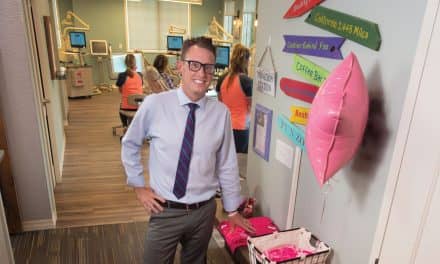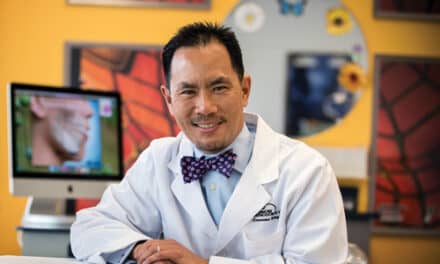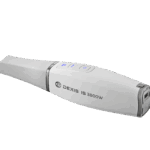Working in a tiny space, Blake Davis, DDS, MSD, shows how the latest digital orthodontic tools–remote monitoring and custom appliances—can maximize the value of every square foot and every patient visit.
By Jane Kollmer | Photography by Cory Parris
When board-certified orthodontist Blake Davis, DDS, MSD, first opened his private practice in 2017 he wanted to leverage technology to completely transform the patient experience. His idea met no resistance in the tech-positive culture of the Seattle area, surrounded by tech giants such as Microsoft and Amazon.
Moreover, Davis completed dental school and his orthodontic residency program at the University of Washington, which is well known for training the foremost leaders in the field.
“I was really lucky to come from this amazing learning environment where orthodontics and innovative technology went hand in hand,” he said. “I felt in some ways like it was my job to push orthodontics further forward.”
After residency, Davis spent several years working as an associate at a large practice with strengths in aligner therapy. But in order to transform orthodontics the way he envisioned, he had to strike out on his own. However, locations for a practice were limited in the competitive Seattle area real estate market. He found a space in Kirkland that was only 1,200 square feet—a lot smaller than the average analog practice.
He would need to generate a lot of business from a tiny space. For this, he drew inspiration from Seattle’s famous Pike Place Market, which was at one point the most productive retail space in the United States per square foot. He wanted his practice to be the Pike Place Market of Orthodontics, where each square foot counted.
At that time, the digital aspects of his workflow included scanning patients, designing their care, and creating digital blueprints. Then all work done in the chair was based on efficiency and reducing the number of visits. He used a remote monitoring system to increase capacity. But at around 50 patients, he found it was too unmanageable to review photos and scans by himself and even with an assistant.
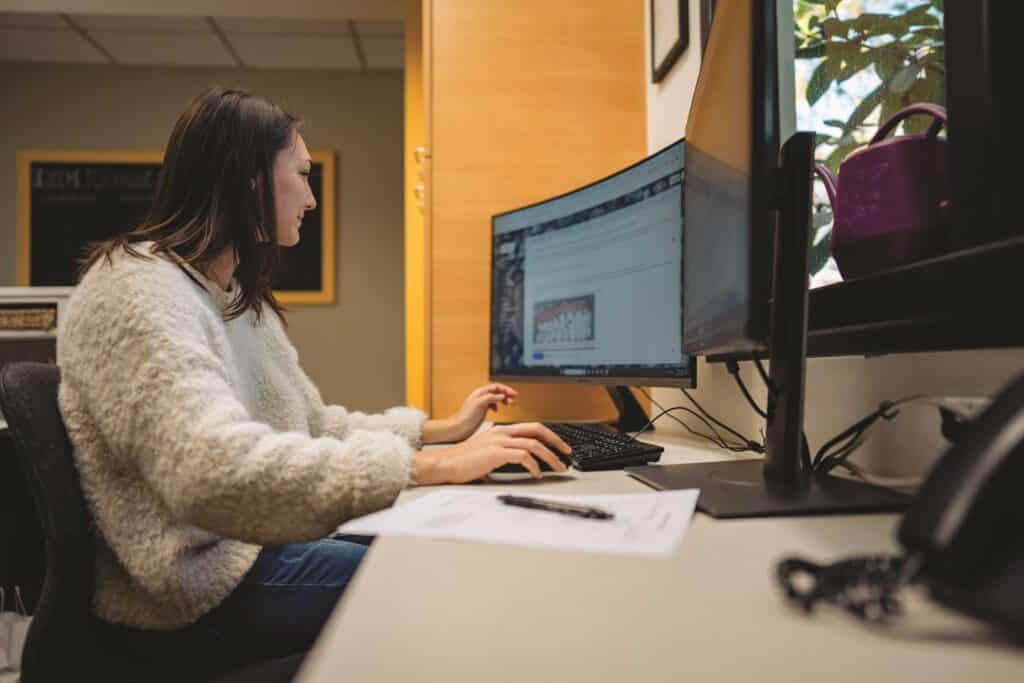
Taking the Leap
Three years after opening, Davis knew he needed a more robust system to customize treatment for both aligners and braces. He decided it was time to take the leap to fully digital by adopting DentalMonitoring and its artificial intelligence (AI) platform for remote monitoring and LightForce’s custom 3D-printed bracket system.
“I got to a point where I just needed the AI. We just got too busy and that forced us to keep pushing in the direction of monitoring both aligners and braces in our practice,” he said.
By implementing AI, the practice increased capacity to three to four more digital chairs in a day and managed the influx of new patients without having to hire a second treatment coordinator.
“Our team has not grown in over 4 years in terms of numbers, but our practice has seen huge growth in terms of production and starts as well as volume,” he said. The practice, which now includes a second location in Redmond, Wash, monitors well over a thousand patients.
Davis explains that traditional orthodontic practices grew by adding assistants, chairs, and treatment coordinator exam rooms. But since he was limited on not just space, but staff, he had to think differently.
“Where I practice is so saturated, it’s so competitive, that it’s really hard just to even find an assistant,” he said. “And so I’m not in a situation where I can have 20 employees in my practice, so it made sense to do everything with remote monitoring in order to continue to grow but maintain a fixed cost structure.”
He also knew that in order to increase the amount of revenue that each full-time employee generated, he needed to turn the star employees on his team into superstars.
Two of these people are his digital workflow coordinator and his DentalMonitoring coordinator.
They have helped build out systems that allow patients to flow through all states of treatment—digital design, custom appliances, and execution—smoothly.
“It was really critical for us to turn these employees that were doing something else into something that we needed now as a digital practice,” he said.
Value per visit
The costs associated with labs, staff, and goods have been increasing consistently over decades, challenging doctors to grow in a competitive environment without compromising quality of care. “Value per visit” is a key performance indicator that practices use to track their return on investment.
Davis says that once he looked at his practice model in terms of the value that each visit brings, it totally changed the way he thought about taking care of his patients. Through this lens, he redesigned all of his systems and processes to be more efficient. Davis determined that $500 per visit should be the benchmark for his practice. If that number drops, he knows he needs to change something.
Davis’ goal is to see no more than 60 patients per day to meet this $500 benchmark. To do this, he focused on eliminating the majority of check appointments—elastic checks, bite checks, and aligner checks. As a result, he and his team are incentivized to make all other appointments as efficient as possible, whether that’s a recall or retention appointment.
Remote monitoring, and specifically AI-driven monitoring, allowed him to still have the control and oversight over his patients while also increasing the value per visit. But he cautions that automating this aspect of the workflow does not mean orthodontists can take their foot off the gas pedal. He says doctors have to invest the time and energy to remodel their systems so that they are doing better diagnosis and treatment planning up front.
“What might be a little bit misleading is if you plug in with DentalMonitoring, it’s going to solve your problems,” he said. “Implementing DentalMonitoring requires you to make some changes to your workflow, scheduling, and treatment plan to experience the full benefit it brings.”
AI can support what the doctors are doing, but it is no replacement for the oversight and decision-making that only comes from the doctor.
“The way we set up cases with aligners, that clearly is not something that AI has solved or algorithms have solved,” he said. “We doctors still need to diagnose, and, in terms of monitoring, we still need to intervene and to evaluate.”
Another lesson he learned was that the initial transition to all digital can be rough, especially when a bulk of the patients are still being seen in the office.
“We finally hit that inflection point where we dropped to where we should, because now everyone’s on demand. And so it is a process in which you’re going to have to go through the fire to get to the other side. But once you get there, life’s much better,” Davis said.
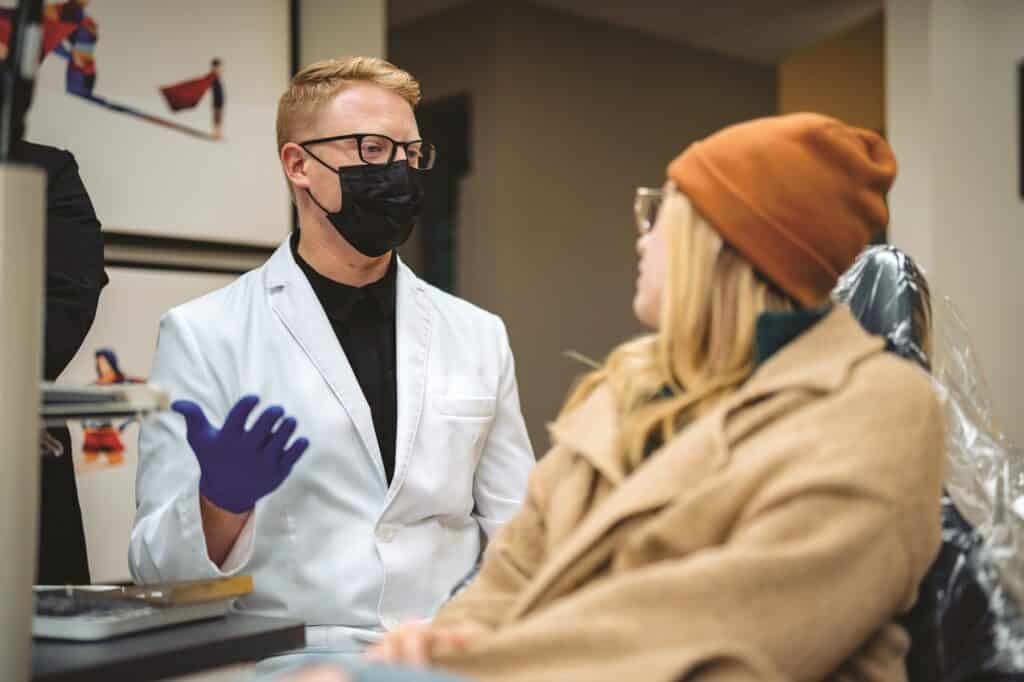
The Impact on patients
Davis says that every time a patient comes into the practice, it has to be an impactful visit because he only has so much space in such a small footprint. He created digital workflows for custom braces and Invisalign that are efficient to the point where he has been able to drastically cut average treatment time and visits per case across the board.
His numbers are impressive. Most of his patients are through with treatment after 14 months. The first 100 cases using LightForce were completed in 9.2 visits on average. Most of his aligner patients are coming in for five to seven visits. With an average refinement rate of 1.19, he cuts out the need for six additional office visits.
“What you do in the custom design of an appliance directly relates to how successful the case is,” he said. “None of this would be possible if this wasn’t something that I was doing up front where I’m creating a digital blueprint.”
A shorter overall treatment time and fewer in-office visits means a lot to his patients. Instead of coming in every 4 weeks to see the orthodontist, they can go between 12 and 24 weeks at a time, whether their treatment is for braces or aligners.
“In my area, usually both parents work and are really busy—whether that means for their own treatment or for their children,” he said. “For them, time is money and I would much prefer to optimize treatment in terms of time.”
Although not all patients choose to use DentalMonitoring, the majority of his patients consistently use it and rely on it to see their progress. With the DentalMonitoring coordinator giving them feedback and encouraging them along the way, they end up with outcomes that they’re thrilled about.
“People want to have a personalized approach to their care, and I think the most important relationship in the practice is between the doctor and the patient and everything else just gets in the way,” he said. “These are the things that you’re going to see when you become a digital practice.”
The big picture takeaway is that the pandemic provided a strategic inflection point for many practices to invest in technology and modify their systems and processes, according to Davis. He predicts that practices that continue to do things the old ways are going to be left behind.
“I think you’re going to see people totally simplify the way that they actually move teeth,” Davis said. “What’s going to probably change the most is we’re going to get so much smarter about the way we take care of patients.”
Reaping the rewards
Davis’ favorite mantra is “What’s best for the patient is best for the practice.” His story proves that digitizing the entire orthodontic experience is best for both his practice and his patients. It’s also better for Davis himself. With his current schedule, he is able to spend more time doing the things he enjoys, like being with his wife and children.
“If you can use technology to save you time, then you can really focus on the things that really matter, and prevent you from burning out,” he said. “I did this to create a situation for myself and my family where I can get out of work on time to watch the kids play sports.”OP
Jane Kollmer is a contributing writer for Orthodontic Products.



